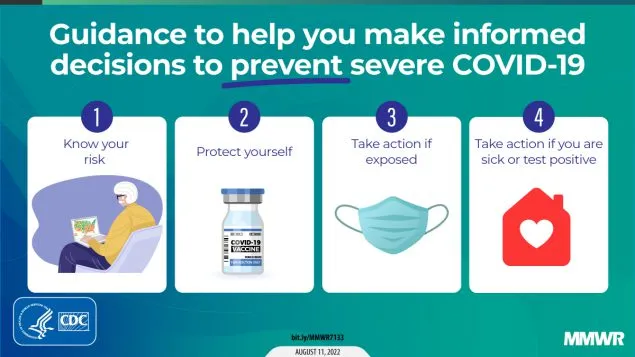Understanding the Latest Changes in CDC Guidance for COVID-19 Vaccines
The landscape of COVID-19 vaccination is continuously evolving, and just when families feel they’ve grasped the guidelines, changes come rolling in. Recent alterations to the CDC’s recommendations regarding COVID-19 vaccines have led to a wave of confusion and frustration for many parents and families across the United States. This article aims to dissect the current guidance, explore what it means for families, and clarify how these changes are impacting healthcare providers, insurers, and most importantly, the children in our communities.
A Brief Overview of the CDC’s Evolving Recommendations
Since the onset of the COVID-19 pandemic, the CDC has issued a series of vaccine recommendations to safeguard public health. As new variants emerge and as collective immunity grows, these guidelines need adjustments based on the latest scientific evidence. The recent changes have primarily focused on:
- Booster shot eligibility and intervals
- Updated formulations of vaccines
- Recommendations for specific age groups
It’s vital for families to stay informed on these shifts, as they can significantly impact their vaccination decisions.
Parents’ Concerns and Confusion
As soon as the CDC updated its guidance, social media platforms buzzed with mixed reactions. While some parents were relieved with the changes, others were left in perplexity, unsure of what these new recommendations meant for their children. Some common concerns include:
- Uncertainty around booster shot timelines
- Differing recommendations from pediatricians and the CDC
- Access to updated vaccine formulations
- Lack of clear communication about potential side effects
Parents have relied heavily on healthcare professionals for guidance, and when there’s a disparity in messaging, it can lead to a sense of helplessness. Dr. Sara Rodriguez, a pediatrician based in California, mentioned, “I understand why families might feel confused. We’re still trying to adapt to new research findings while making sure our patients feel safe and well-informed.”
Updated Vaccine Formulations and Their Implications
The most recent CDC guidance has introduced new formulations tailored to systematically tackle emerging variants, making them distinct from the original vaccine shots. This necessitates further education on the part of medical professionals and health organizations to ensure that families fully grasp the need for updated vaccines, especially with lines like Omicron variant-specific vaccine cocktails becoming mainstream.
Moreover, the process of manufacturing and distributing these new formulations has raised logistical challenges. The accessibility of these vaccines remains a paramount concern, notably in regions where vaccine hesitancy is prevalent. Families have reported difficulties in locating providers equipped with the latest vaccines, thereby amplifying existing frustrations.
Feeling Outnumbered: Doctors vs. Insurers
The dynamic between healthcare providers and insurers plays a crucial role in how families receive COVID-19 vaccinations. With the new guidelines, doctors have reported challenges in insurance coverage for the latest vaccines. For instance, many insurers require a prior authorization process, causing additional delays in vaccination for families eager to protect their children.
“It feels like every time we turn around, there are new layers of bureaucracy,” said Dr. Karen on the East Coast. “You have parents looking to protect their kids, and then you have insurance red tape getting in the way.”
This adds to the growing frustration that families experience. Some families, especially those already navigating the healthcare system navigating through insurance approvals, are finding it challenging to secure timely vaccinations, further compounding the issue of vaccination hesitance.
Guidance for Families
For families seeking to make sense of these changes, staying informed and proactive is crucial. Here are some recommendations to navigate the current climate surrounding COVID-19 vaccinations:
- Stay Updated: Regularly check the CDC website and consult with reliable medical sources for the most current guidance.
- Ask Questions: When visiting healthcare providers, come prepared with questions regarding the vaccination process, side effects, and the specifics behind the new formulations.
- Know Your Options: Research local facilities that have the updated vaccines available, and inquire about the availability of booster shots.
- Discuss Concerns with Healthcare Providers: Don’t hesitate to discuss any anxieties or concerns regarding the vaccine with a healthcare professional. They can address personal concerns and avoid misinformation.
A Call for Clear Communication
The confusion surrounding the CDC’s updated guidelines highlights an urgent need for clear communication. Families depend on transparent and concise information when making health decisions for their children. As the health landscape continues to evolve, the responsibility lies with health organizations, community leaders, and healthcare providers to disseminate information clearly.
Parents should be empowered with the knowledge they need, rather than left feeling bewildered. Community outreach programs can significantly lend a helping hand in this matter through organized informational sessions, circulars, and public seminars aimed at educating families about current vaccination protocols.
Conclusion: Bouncing Back and Moving Forward
The latest changes in CDC guidance regarding COVID-19 vaccines have indeed thrown parents, families, and healthcare providers into a whirlwind of confusion. Yet, amidst the uncertainty, it’s essential to remain adaptable, informed, and engaged. Families must leverage trusted resources, maintain communication with healthcare professionals, and advocate for clearer regulatory communication. Through unity and awareness, we can collectively navigate through these turbulent times toward achieving a healthier community.
With the looming potential of additional updates from the CDC as more scientific studies emerge, keeping an eye on the trajectory of vaccinations will be paramount. Clear guidelines and timely information will play a vital role in building trust, reducing anxiety, and ultimately, empowering families to make informed health choices.







